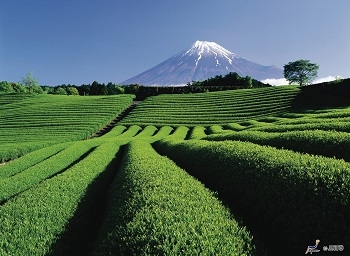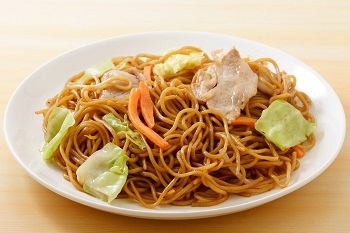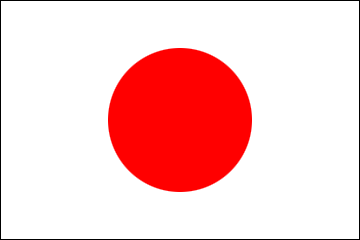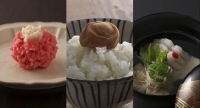Japanese Kitchen
2021/6/23
In this month's edition of Japanese Kitchen, we travel to Shizuoka Prefecture which is perhaps most well known as being the largest producer of tea in Japan. Take a look at the article below which introduces the region and why not try making the recommended dish for yourself at home?!
Fujinomiya Yakisoba
 Shizuoka Prefecture is famous for its views of Mount Fuji – the highest mountain in Japan standing at 3,776 meters (comparatively the highest mountain in the UK is Ben Nevis which is just over a third of the size at 1,345 meters).
Shizuoka Prefecture is famous for its views of Mount Fuji – the highest mountain in Japan standing at 3,776 meters (comparatively the highest mountain in the UK is Ben Nevis which is just over a third of the size at 1,345 meters).The prefecture claims the number one position in a number of green tea-related categories, including the largest tea harvest, the largest amount of land devoted to tea farming, and the largest per capita expenditure on tea. Green tea plantations here date back to 1241, when a monk named Shoichi Kokushi planted green tea seeds obtained during a trip to Song China near his hometown in present-day Shizuoka Prefecture.
Shizuoka’s climate, along with its water quality and proximity to major ports, has since solidified its status as a major region for green tea production. In addition, Shizuoka’s green tea comes in a number of different varieties, giving it significant versatility.
Japanese people enjoy green tea in a number of ways, including matcha (ground tea leaves) which is used in Sado (The Way of Tea), houjicha (roasted tea leaves), and even as cold brew green tea but simply letting sencha (loose leaf green tea) steep in water in the fridge over several hours – why not try it for yourself as a refreshing drink for the summer months?
As well as green tea, Shizuoka also has the largest market share of wasabi (Japanese horseradish) which was first cultivated in the region. In recent times, the popularity of Japanese cuisine worldwide has considerably increased demand for wasabi globally.
However, it is the local specialty of Fujinomiya yakisoba which inspired the recipe for this month's article. Fujinomiya yakisoba is made by heating lard on a hot plate (or frying pan), frying meat and cabbage, adding Fujinomiya noodles that have been fried separately, and finally mixing sauce and bonito flakes, and topping with aonori and pickled ginger.
This dish evolved as a side menu at popular okonomiyaki restaurants, cooked using less water to help it keep fresh longer, and eventually became unique to Fujinomiya. There is now a ‘Fujinomiya Fried Noodle Society’, and it is promoted all over the country. This society won the first two ‘B-1 Grand Prix’, a nationwide competition that celebrates popular but inexpensive local dishes in Japan.
Although technically Fujinomiya noodles should be used for this dish, you can still enjoy making it home with any Chinese style noodles that you are able to find. I hope you will be able to try the real-deal for yourselves in Shizuoka sometime!
Fujinomiya Yakisoba recipe
Ingredients (serves 2)
Instructions
 Yakisoba/Chinese style noodles (2 packs)*
Yakisoba/Chinese style noodles (2 packs)*- Thinly sliced pork (200g)
- ¼ cabbage
- 1/3 carrot
- Lard (30g)
- Water 80ml
- 3 tbsp Yakisoba/tonkatsu sauce* (or combine 2 tbsp worcester sauce, 1/2 tbsp soy sauce*, 1/2 tbsp mirin*)
- Aonori (dried green seaweed)*
- Benishoga (pickled ginger)*
Instructions
- Heat a small amount of oil in a pan and add the lard and pork. Stir on a medium heat until browned. Add the cabbage and carrot and stir so that the vegetables are coated in the lard. Cook until the cabbage has wilted.
- Add the noodles to a pan and while stirring to unravel them, add the water, put on the lid and leave to steam on a medium heat for about 3 minutes.
- Remove the noodles and add them to the meat and vegetables. Add the yakisoba sauce and fry all together. Turn off the heat.
- Place Yakisoba on the plate and sprinkle with bonito flakes, aonori and place some benishoga on top.

